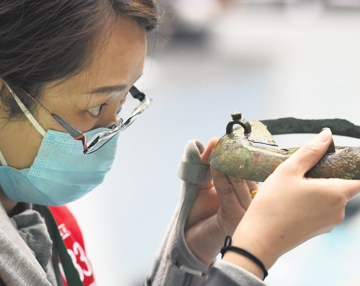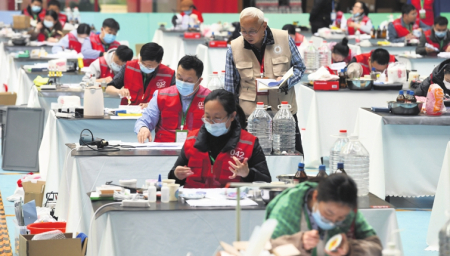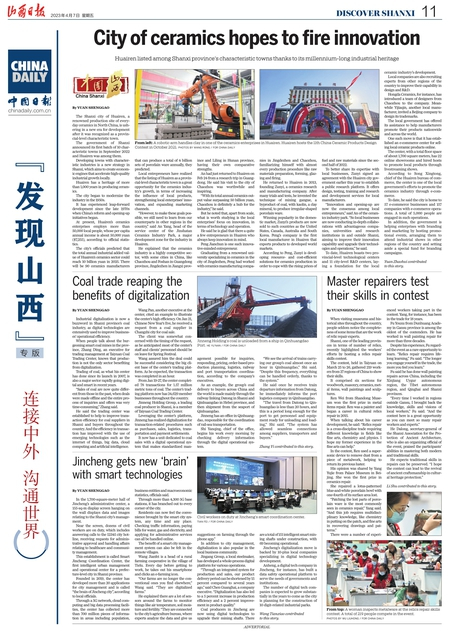Master repairers test their skills in contest

A woman inspects metalware at the relics repair skills contest.

A total of 219 people compete in the event.Photos by Wu Liuhong / For China Daily
When visiting museums and historical sites throughout the country, people seldom notice the completeness of some items that are the work of relic repair experts.
Shanxi, one of the leading provinces in terms of number of relics, recently highlighted the workers' efforts by hosting a relics repair skills contest.
The contest, held in Taiyuan on March 25 to 26, gathered 219 workers from 27 regions of China to show their skills.
It comprised six sections for woodwork, masonry, ceramics, metal items, wall paintings and sculptures.
Ren Wei from Shandong Museum won the first prize in metal items repair. Ren was a painter and began a career in cultural relics repair in 2015.
When talking about his career development, he said: "Relics repair is a cross-discipline trade requiring different knowledge in fields like fine arts, chemistry and physics. I hope my former experience in the fine arts can help."
In the contest, Ren used a supersonic device to remove dust from a piece of metalwork, helping to return its previous luster.
His opinion was shared by Yang Yujie from the Palace Museum in Beijing. She won the first prize in ceramics repair.
She repaired a lotus-patterned blue-and-white porcelain bowl with one-fourth of its surface area lost.
"Patching the lost parts of porcelain ware is the most common practice seen in ceramics repair," Yang said. "And this job requires multidisciplinary knowledge, like chemistry in putting on the patch, and fine arts in recovering drawings and patterns."
There were a number of experienced workers taking part in the contest. Yang, for instance, has been in the trade for 18 years.
Fu Youxu from Dunhuang Academy in Gansu province is among the oldest of the contenders. He has worked in wall painting repair for more than three decades.
Despite his experience, Fu regarded the event as a rare opportunity to learn. "Relics repair requires lifelong learning," Fu said. "The longer you engage yourself in the trade, the more you feel you learn."
Fu said he has done wall painting repairs across China, including the Xinjiang Uygur autonomous region, the Tibet autonomous region, and Qinghai and Shanxi provinces.
"Every time I worked in regions outside Gansu, I brought back the knowledge, skills and visions of local workers," Fu said. "And the contest here is a great opportunity as you can meet so many repair workers and experts."
He Dalong, secretary-general of the Shanxi Association for the Protection of Ancient Architecture, who is also an organizing official of the event, praised the participants' abilities in mastering both modern and traditional skills.
He expects traditional skills in repairs can be preserved. "I hope the contest can lead to the revival of ancient craftsmanship in cultural heritage protection."
Li Shu contributed to this story.
By Yuan Shenggao











